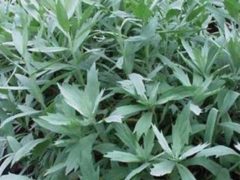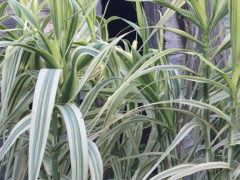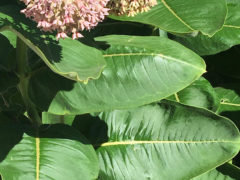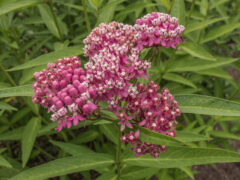
Artemisia ‘Powis Castle’
Artemisia ‘Powis Castle’
Beautiful ferny, silvery-gray foliage makes an excellent addition to borders and landscapes. A perfect color … Continued
Drought-tolerant and drought-resistant plants may still need supplemental water from time to time, but they can survive periods of dryness without dying.
Drought-resistant plants like cactus, hens and chicks, and sedums can go for very long periods without water and do not tolerate poorly drained locations. Drought-resistant tropical plants grown indoors in winter like cactus, Sansevieria, Echeveria, and other succulents sometimes fail due to overwatering.
Drought-tolerant plants grow in many textures and sizes and have different adaptations that help them get through periods of drought:
The latter two types of plants are drought tolerant once established because any new planting, regardless of drought tolerance, needs to be watered during the first growing season to allow roots to reach the depths needed to access moisture during dry periods.
It’s also important to note that survival may not mean that the plant will look its best during this time. Watering weekly for a longer period of time will result in the best-looking gardens with the highest tolerance for drought. During the hottest, dryest times in summer, watering deeply twice a week is recommended. These less frequent waterings will encourage root systems to expand, making it easier for plants to access moisture when their environment is dry.
Winter drought has become a bigger problem in recent years as snowfall declines. Evergreen plants are especially vulnerable during winter drought because their foliage continues to shed moisture while dormant deciduous plants have shed their leaves and can conserve moisture in woody stems and underground. Watering shrubs and trees in winter on days when the temperature allows (above freezing) will help ensure their healthy return in spring.
Here are some drought-tolerant and drought-resistant plants to grow—

Artemisia ‘Powis Castle’
Beautiful ferny, silvery-gray foliage makes an excellent addition to borders and landscapes. A perfect color … Continued

Artemisia schmidtiana ‘Silver Mound’
Low-growing, ferny, silver, aromatic foliage is excellent for borders and underplantings. Stunning in mass, it … Continued

Artemisia ludoviciana 'Valerie Finnis'
Velvety, silver foliage with lance-shaped leaves and pale yellow flowers add contrast all season in … Continued

Arundo donax 'Variegata'
Grows to 12′ tall with a spread of 10′ at a fast rate. Grow in … Continued

Asarum canadense
This low, colony-forming perennial grows large, velvety, heart-shaped leaves with a darkish red-brown to green-brown … Continued

Asclepias syriaca
Common milkweed produces dusty pink flower clusters in mid-summer atop large, glossy leaves that resemble … Continued

Asclepias incarnata 'Ice Ballet'
Clusters of white blooms, from mid-summer to autumn are nectar-rich, attracting butterflies galore. As the … Continued

Asclepias speciosa
Showy milkweed produces dusty pink flower clusters in mid-summer atop large, glossy leaves that resemble … Continued

Asclepias curassavica
‘Silky Deep Red’ blooms scarlet red and yellow two-tone. ‘Silky Gold’ sports yellow blooms. Both … Continued

Asclepias sullivantii
Easily grown in average, medium to wet soils in full sun, plants may self-seed in … Continued

Asclepias incarnata
Swamp milkweed sports lightly fragrant flower clusters from early summer through fall. Plants grow 3-5′ … Continued

Asclepias hirtella
Plants grow up to 4′ and produce white flowers. This species prefers medium-wet to dry … Continued